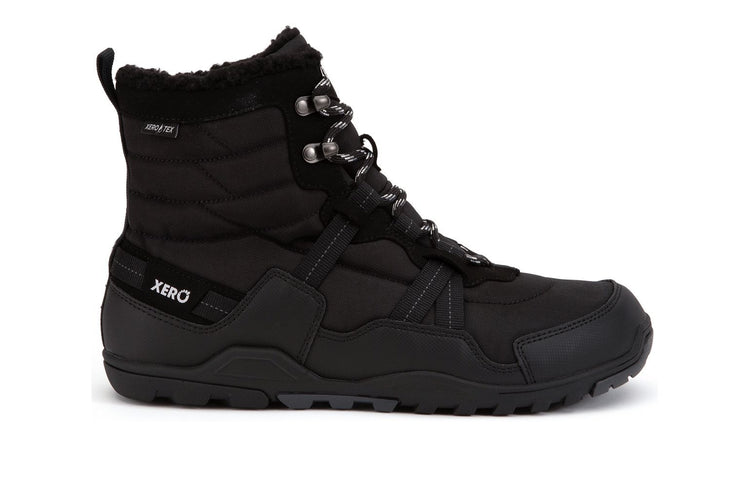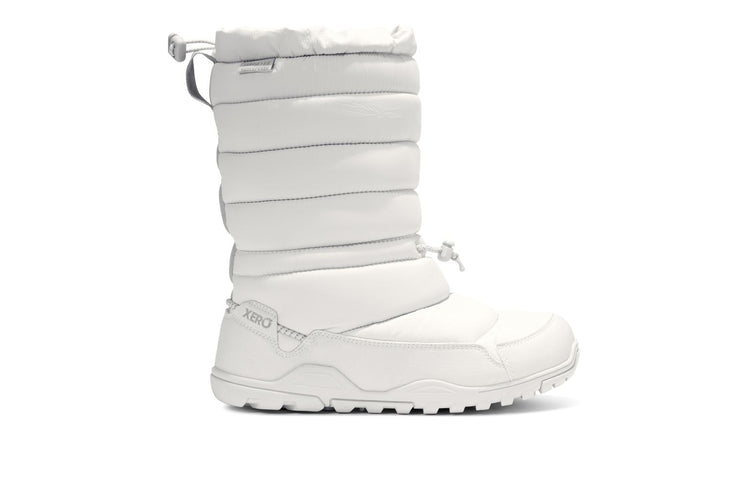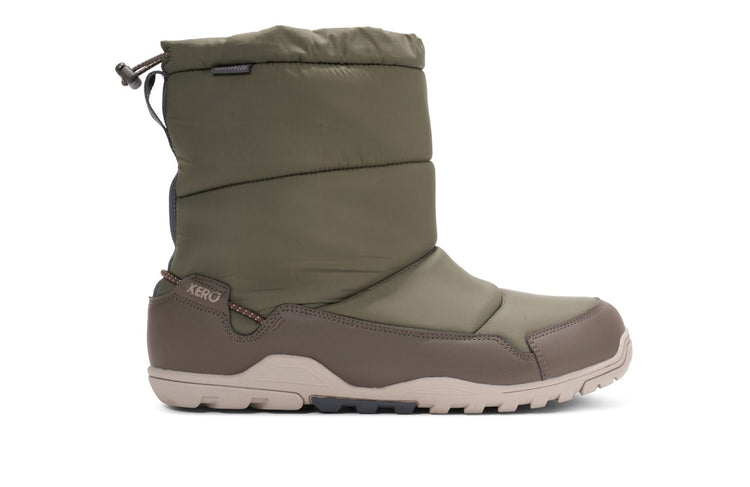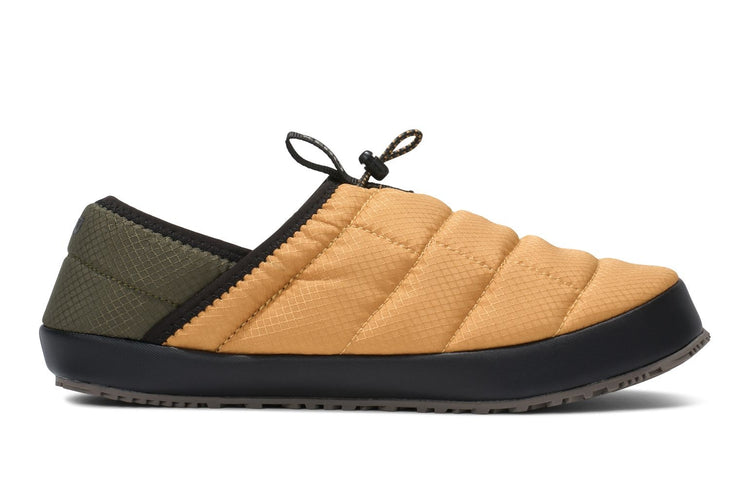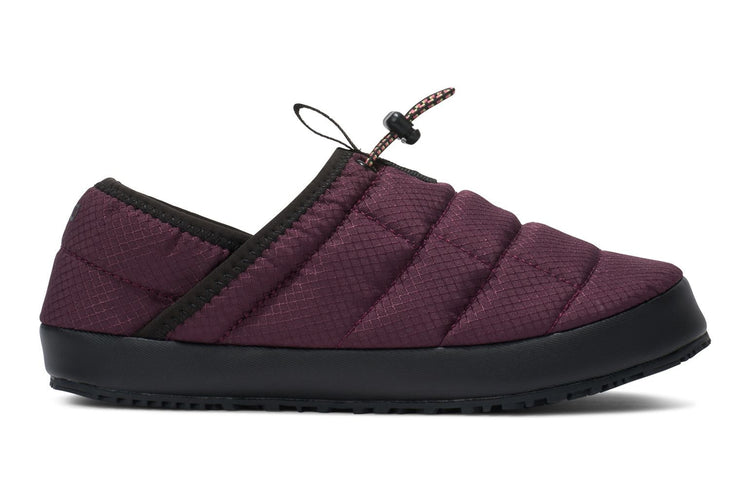latest News
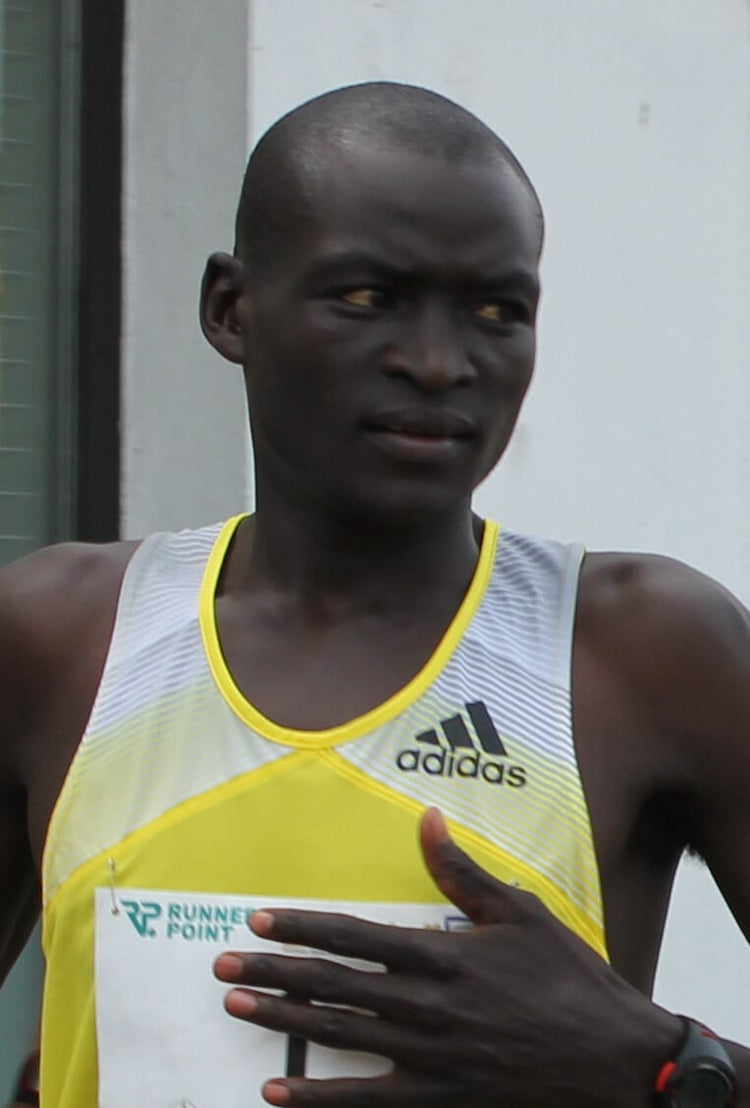
Who will run the first 1:59 marathon?
Dennis Kimetto shattered the marathon world record when he ran 2:02:57 in Berlin.But how fast can we really go over a 26.2 mile course?2:01?2:00?Faster?Well, long-time distance running guru, Phil Maffetone thinks 1:59 is do-able. VERY do-able.And he also thinks that the person who sets that record will be running barefoot!Frankly, we hope he (and, I know it sounds sexist, but it'll be a "he") opts for a tiny bit of protection and wears a pair of Xero Shoes!Phil's book has some fascinating info about the sub-2 marathon, and even things that might help you run faster than you thought you could. And you'll find out why he thinks the sub-2 wil be run without shoes.Check it out on Amazon -- http://www.amazon.com/Sub-Two-Hour-Marathon-Within-Runners-Training/dp/1629148172And to show you something beautiful, look at this slow-mo video of Dennis. Even with a 10mm drop in his shoes, he's a serious mid-foot strike runner. I'd love to get Dennis in a pair of Amuri Cloud ;-)

Daniel Lieberman studies the Tarahumara running
Dr. Daniel Lieberman is one of the fathers of the barefoot running movement. His study showing how barefoot runners strike the ground with less force than shod runners, combined with Christopher McDougall's book, Born to Run, catalyzed the growth of barefoot and minimalist running. Well, it's as if Dr. Lieberman had a child with BTR, since his new study looks at how the Tarahumara run. And, more, it compares Tarahumara runners in huaraches to younger Tarahumara who run in padded running shoes. You can read the study for free here. Before I talk about what the study reveals (and what it doesn't), let me address a myth about barefoot running...Barefoot Running Myth #1One of the myths of barefoot running is that there is ONE WAY to do it: Your foot hits the ground in a certain way, you move your legs at a specific speed, you hold your arms in one configuration, and you run long, long distances. Hogwash, I say (as if I lived in the 30's). There's actually quite a bit of individual difference among competent barefoot runners, even though a few concepts are consistent. The problem with this myth is that it interferes with one of our brain's favorite hobbies, namely:The Brain's Favorite HobbyBrains like to know how things work. They like patterns. They like consistency. Oh, they're fascinated by the novel and new, but when it comes to survival, they like to know the rules. See the problem? When we want to learn something new, like how to run barefoot, we want to know "What's the one way I should do this? Show me a video I can imitate. Give me the rules." But, as I just said, there's not ONE way, there are variations of a theme.We now return to our regularly scheduled programAnd this brings us back to Lieberman's study. He finds some real variation in foot strike patterns among the huarache-wearing Tarahumara.40% primarily using midfoot strikes, 30% primarily using forefoot strikes, and 30% primarily using rearfoot strikes.70% land in a way that's consistent with the bigger picture of barefoot running, namely, don't land on your heels. But 30% DO heel strike! "How could they possibly rearfoot (or heel) strike?" you may ask. There are a couple of answers/comments: Footstrike isn't everything. Just because their heel touches the ground first, that doesn't mean they're putting extra force into their bodies by doing so. Which part of your foot touches the ground first doesn't always tell you everything you need to know. It's possible to have your heel contact the ground first but, because of your speed and where you place your foot in relationship to your center of mass, not apply force into the ground until your midfoot hits. So you could look like a heel striker, but apply force like a midfoot striker. Traditional huaraches are thick and stiff. If you haven't held a pair of huaraches made from tires and leather, you'll be in for a shock when you do. They're heavy and stiff. They reduce the amount of feedback you get from the ground... on purpose. Some of those Copper Canyon trails are seriously pointy, pokey, sticky. So it may be that some Tarahumara heel strike because they don't get the same feedback -- pain -- that one would get running barefoot. Traditional Tarahumara Huarache -- thick and stiff So don't get hung up on the fact that 30% of the Tarahumara that Lieberman studied heel strike. But also don't think, "Well, if they can do it, so can I!" More about that later. Next, Lieberman pointed out:In contrast, 75% of the conventionally shod Tarahumara primarily used rearfoot strikes, and 25% primarily used midfoot strikes.That's an interesting one: change the shoes, change the gait. I saw that when I was in Dr. Bill Sands' lab. Dr. Sands is the former head of biomechanics and engineering for the US Olympic Committee. He had hundreds of videos showing how the same runner will change their footstrike and, ofter, their entire gait, depending on the shoe they wear. That shod runners more often land on their heels isn't surprising to people familiar with barefoot running since we make the opposite argument: take OFF your shoes and your gait will change (over time and with some attention).What Lieberman's Study Does NOT SayLieberman looked at a number of other aspects of the gait of huarache-wearing and shoe-wearing Tarahumara: overstriding (the huarache wearers were less likely to do so), flexion of the joints (huarache wearers bend their joints -- use their springs -- more), and arch stiffness (huarache-wearers have stronger arches). Read the study to find out more. But what he does not say is just as important as what he does. He doesn't say "switch to sandals," or "midfoot or forefoot strike is better" or anything prescriptive. Lieberman is being especially circumspect about the meaning of the data he collected. This is, perhaps, a good thing, given how evangelical barefoot runners often take any seemingly pro-barefoot news as an excuse to have a shoe-burning party, which then backfires when any seemingly anti-barefoot news causes shod runners to chime in with "Nah-nee nah-nee, boo-boo" (or something equally insightful).Show me the moneyNote that I say "seemingly" for both pro- and con- news. That's because there still aren't any good studies that clearly demonstrate "Barefoot is better" or "barefoot is worse." And there are no studies showing "shoes are better" either, even though there has been 45+ years to whip one of those up, and many research labs are sponsored by big shoe companies. Those of us who've been living a barefoot or truly minimalist lifestyle now have lots of personal experience about the changes that can happen. And studies like Lieberman's hopefully provide more incentive for researchers find the cash to find out if we're unusual or if anyone who ditches their shoes can have the same kinds of expeiences (okay we know the answer to THAT, but you know what I mean ;-) ).The content of this post does not constitute and is not intended to be a substitute for professional medical advice, diagnosis or treatment. Always seek the advice of a physician or other qualified health provider with any questions or concerns you may have about your health or a medical condition.
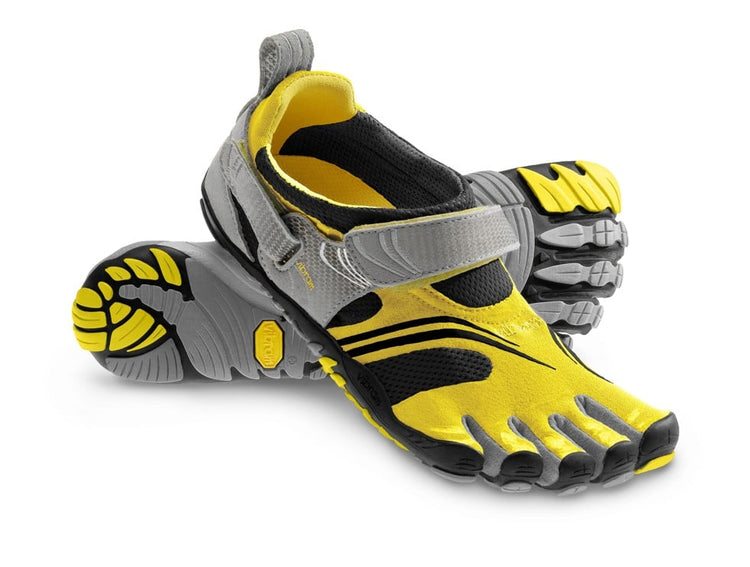
Will Vibram Fivefingers make your feet stronger?
Big news today in the barefoot world: Vibram settled a class action lawsuit that claimed the company deceived customers when it claimed that VFFs would decrease foot injuries and strengthen foot muscles.As reported in the Washington Post:The company agreed to put aside $3.75 million to pay refunds of as much as $94 to anyone who had bought a pair since March 21, 2009, according to Runner’s World.(Okay that was according to Runner's World as reported by the Washington Post. The Post article was the one that showed up in my newsfeed.)Further:Vibram has agreed to discontinue to make any claims that FiveFingers footwear is effective in strengthening muscles or reducing injury in its marketing and advertising campaigns, unless the company discovers new scientific evidence that proves it.This suit, and Vibram's response bring up some interesting questions.Is settling in any way an expression of guilt? Not according to Vibram:Vibram expressly denied and continues to deny any wrongdoing alleged in the Actions, and neither admits nor concedes any actual or potential fault, wrongdoing or liability,” read the court brief.While it's true that settling a lawsuit does not equate to guilt, it's kinda hard to argue that Vibram made the claims and, in fact, didn't have scientific evidence to back them up.This is similar to when Reebok and Skechers paid up after claiming their "toning shoes" would help you lose weight and firm up your butt. Those companies had to pay 25-40 million to settle their suits.Is the settlement appropriate?Let's be honest, $3.75 million is barely a slap on the wrist for a company that sold hundreds of millions of dollars worth of shoes. In fact, this is barely a tap on the arm hair on the back of the wrist.Agreeing to pay less than $4 million is clearly a payment just to make the case go away. Had they moved forward, the case could have cost tens of millions of dollars; so settling is usually a matter of cost-benefit analysis.What about the claims? Are they true?Well, here's where it gets interesting. Many people online, including on our Facebook page are, I think, confusing the issue.The question isn't whether being barefoot or, in this case, somewhat minimalist, can be helpful. Or whether you can strengthen your feet and reduce injuries by ditching your shoes.That's been my experience, and we've received hundreds of emails from Xero Shoes customers who report the same.But that's not the point.The point is: there's currently no scientific evidence to back up the claim. And if you can't prove it, you can't claim it in your advertising. That's the law. Making unsubstantiated claims can lead to "unfair enrichment."Is it fair?Ah, another interesting point. Shoe manufacturers have been making similar unsubstantiated claims for decades (more than Reebok and Skechers, mentioned above). But they haven't been taken to task for it.In my opinion, the only reason they haven't had to pay the piper is that there were never enough people who got all in a tizzy about their claims. People, by and large, just write off shoe company claims that their shoes will make you bigger, stronger, faster, as hyperbole.There was never enough mass, concentrated, public outrage to inspire someone to take action, like filing a class action lawsuit.I think the sudden and meteoric rise in interest in barefoot running, combined with claims like Vibram made, created a "perfect storm" for this kind of situation.Frankly, I'm surprised nobody has followed this with suits against other companies who've acted the same way.FWIW, Lena and I have been as diligent as possible about not making health claims, despite our experience and that of our customers, just because we knew the law. In fact, the FTC has gotten more stringent in the last few years, where companies have to be careful about even letting customers report their own experiences, since those can, arguably, be interpreted as a way of making unsubstantiated medical claims.Is this just another "McDonald's coffee" case?I've read this a lot.People comparing this suit to the one where Stella Liebeck sued McDonalds after getting burned by spilling hot coffee on herself.They say things like, "Hey, just because you went out too fast, too soon, don't go suing Vibram for your stupidity."First of all this isn't the same because the suit is a class action suit. Rarely do those result in windfall payments to the plantiffs.Secondly, it shows a misunderstanding, a common one, about Stella's suit. While people think Stella was just suing to make up for her stupidity, that's far from the case. The real issue behind that suit was that McDonalds had admitted to numerous instances of heating their coffee too much, resulting in injuries to other people, and despite that, hadn't taken any action to address the situation. More, people think Stella sued for and received WAY more money than she did. She just wanted her medical bills covered.The point being, even if Valerie Bezdeck, who brought the suit against Vibram, sustained injuries after wearing her VFFs, that's not the issue. The issue is: Can a company make unsubstantiated claims about a product? And while the answer is, "No," Vibram didn't have a day in court to argue this point.If they had, though, it might have been tricky since perhaps the most well-known study seemed to show that VFF wearers are more likely to get injured than regularly shod runners.I've previously commented on that study, BTW, and said that the real issue was the transition plan recommended by Vibram and followed by the runners in the study, compounded by the fact that the VFFs have enough padding that they decrease the sensations necessary to naturally change your gait (because you can't feel what hurts until it's too late).Is this the end of barefoot?This is the part that still irks me.Any time there's ANY news that suggests being barefoot and barefoot running will not improve your life, end world hunger, and land a man on Mars, it's written as if it's an episode of To Catch a Predator.Granted, the Washington Post article doesn't do this and, in fact, presents the reality of barefoot running perfectly:Does Vibram being caught flat-footed mean there’s no merit to barefoot running? Absolutely not. There is conflicting research on the subject, but I’ve met dozens of people who gave up the sport because of leg injuries suffered in traditional running shoes, only to have their exercise regimens revived by the minimalist variety. In fact, I’m married to one. There’s a niche for flatter-soled running gear, just as there’s a market for people who prefer to drive Maseratis instead of Mazdas.I would, of course, say barefoot is the Maserati in this analogy and that even though minimalism is currently a niche, it should be much more.But I also agree that the research needed for us to be able to make the kinds of claims that many of us have experienced isn't there yet. And, so, caution is necessary for those of us in the commercial space. And I am not claiming that your flat feet will develop arches the way mine did once I started going barefoot and in Xero Shoes.;-)What do you think?The content of this post does not constitute and is not intended to be a substitute for professional medical advice, diagnosis or treatment. Always seek the advice of a physician or other qualified health provider with any questions or concerns you may have about your health or a medical condition.

The truth about barefoot running finally revealed in an Infographic
Finally, all the statistics and information about barefoot running you need to know.Enjoy! And SHARE!(click to see full size)Here's my commentary on the infographic :-)The content of this post does not constitute and is not intended to be a substitute for professional medical advice, diagnosis or treatment. Always seek the advice of a physician or other qualified health provider with any questions or concerns you may have about your health or a medical condition.
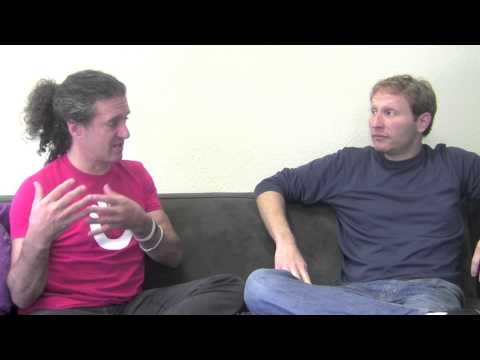
Leg length differences and barefoot running
Can you run barefoot if your legs are different lengths?This is a question I get at least once a week. And I think the answer may be surprising.Watch this video that I made with Joshua Gordon about barefoot running technique and leg length issues (and a LOT more). Then leave a comment below with your thoughts.EnjoyThe content of this post does not constitute and is not intended to be a substitute for professional medical advice, diagnosis or treatment. Always seek the advice of a physician or other qualified health provider with any questions or concerns you may have about your health or a medical condition.
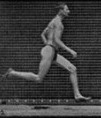
Become your own barefoot running coach
I had an intense sprinting workout 2 days ago, followed by an even more intense weight lifting workout and this morning I can barely walk. Even more, I did a minor tweak of something in my ankle which I'm noticing as I walk on my treadmill (I have a treadmill desk). As I'm walking, I have to experiment and make minor changes to my gait in order to walk with proper form and pain free.This reminded me of an old joke:"Doctor, it hurts when I do this.""Well, stop doing that!"While this is an old joke, it's important barefoot running lesson, namely:If it hurts, STOP DOING THAT.Remove the following thought from your mindFor decades now we've been told things like "No pain, no gain" (I'm assuming you remember the running shoe company that first told you that).(BTW, I'm no conspiracy theorist, but if I sold a product that contributed to injuries the way that running shoes seem to, I can't think of a better way to convince people to use my product, despite the effects they may have been experiencing when using it.)But, back to the point... When it comes to barefoot running (and walking, and hiking, and anything else), the most important skill you can develop is the ability to be your own coach. And the most important coaching skill you can learn is to experiment with different movement patterns.When it comes to running barefoot, the odds are high that if you're doing something that hurts you're doing something incorrectly. And the way to make things stop hurting is to do something differently.Becoming your own barefoot running coachWhat are some of the kinds of hurts I'm talking about? Sore calves Sore Achilles (sore anything, really) Blisters Callouses Stubbed toes Abrasion between your toes, on top of your foot, or around your heel (if you're wearing huaraches). If you're wearing huaraches running sandals, there are some "injuries" to the sandals that "hurt", like: Wearing away the toe knot Breaking the toe strap above the knot Breaking the strap by the outside ankle hole All of these can be corrected by doing something differently, by changing your gait, or your thinking.What kind of changes are we talking about? Don't reach out with your foot (overstriding), but place your foot under your body as much as possible. For some people, you'll want to try to have your feet land behind you (you won't be able to, but the cue will move your feet further back). Barefoot Ken Bob has a great line: Move your torso forward and have your feet try to catch up. Another tip for doing something different than overstriding: pull your toes up towards your knees slightly, just before you land... some people overstride by reaching out with their toes. Don't push off the ground with your toes/calves, but LIFT your foot off the ground by flexing the hip. Don't think of your foot as something you "land" on, but as something that skims across the ground at the speed you're moving. Try a different surface -- smooth hard surfaces are the best for barefoot running because they give you the most feedback about your form. But if you're on a surface that hurts to run on, try a different one. Do shorter runs. Give yourself as much time as YOU need to learn proper barefoot technique. There's no magic number of days or weeks that it'll take. It's different for everyone. Start with short runs, really short runs... like 200 yards. Pick up your cadence. Move your feet faster, without running faster. Experiment with different speeds. Some people say you MUST run at 180 steps per minute. It's not true; that's not a magic number. But the odds are good that you'll want faster turnover than you're used to. In the cold, do "loops" instead of runs. Your body can handle cold better than you think, especially if, instead of doing one long run, you go out until your feet are cold, come back and warm up, and repeat. Try landing on your feet in different ways. You're not required to land on the ball of your foot. Midfoot might work better for you. Flat footed might work better. How you land when you're going uphill may be different than downhill. Fast may be different than slow. Many of these are overlapping. If you don't overstride, you won't have to pull your foot toward you. If you speed up your cadence, it's harder to overstride and harder to use your calves too much.Do the mathMany of the problems described above are related to these equations:Excessive friction causes abrasion. Abrasion causes blisters or lace wear. Excessive friction is unnecessary for running barefoot.Using muscles more than necessary causes soreness. You can run barefoot with less muscle tension than you think.If you look at the feet of accomplished barefoot runners, you won't find blisters or callouses. If you look at the bottoms of the sandals of accomplished barefoot sandal wearing runners, you'll find no abrasion on the toe knot or the ankle hole areas.If you tested barefoot runners for calf strength, they're typically not any stronger than the average non-barefoot runner.Did I mention: Have Fun!Perhaps this is the most important coaching tip you can give yourselfIf you're not having fun, do something different until you are! Run like a 3 year old for a while: let your head lead you, let your arms flail, run in circles and sweeping arcs, make noise!I often have this thought going through my head as I run: "What can I do to make this lighter, easier, and more fun?" Give it a whirl.Good to greatA good coach can give you a workout to follow.A great coach will adjust the workout, moment by moment, based on reality.Feeling good? That'll change things.Feeling tired? That'll change things.Different location, elevation, weather? That'll change things.Let yourself become a great barefoot running coach.And let us know how it goes! Quick update: The evening after writing this post, Lena asked me, "How's your ankle?""What do you mean?" I replied."You wrote a post that said you tweaked your ankle.""Oh, right," I said, remembering. "After an hour of experimenting with how I was walking on the treadmill, it must have fixed itself, because it's fine now."The content of this post does not constitute and is not intended to be a substitute for professional medical advice, diagnosis or treatment. Always seek the advice of a physician or other qualified health provider with any questions or concerns you may have about your health or a medical condition.
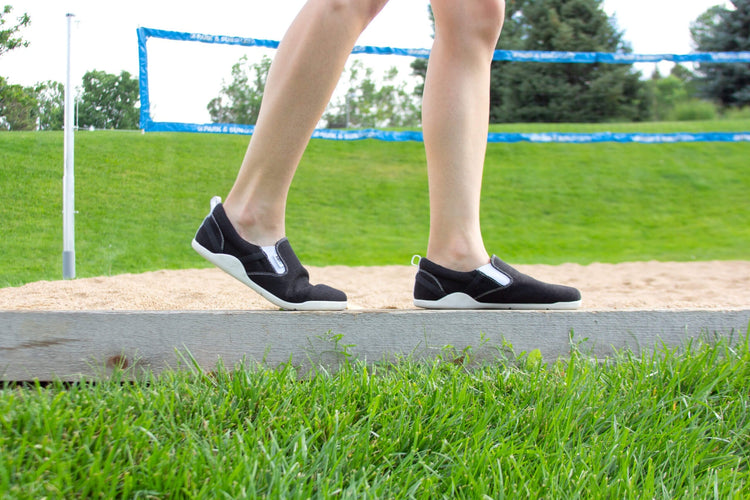
Are Barefoot Shoes Good for Plantar Fasciitis?
It is estimated that around 10% of the population suffers from heel pain caused by plantar fasciitis. Interestingly, though the condition is quite common, we don’t know as much as you might expect about what causes it and how to treat it. I often hear from runners who have switched to barefoot-style running that they have experienced freedom from the plantar fasciitis that used to bother them. In this article, I’d like to share a bit about some research that points to a reason why this may be happening. If you suffer from plantar fasciitis, you may find this opens up some new directions to explore as you seek optimal foot health. I’ll start off with some important background about what plantar fasciitis is, what seems to cause it, and how it’s often misdiagnosed. Then we’ll look at some research that points to an interesting new approach to helping people find relief. What is plantar fasciitis? On the bottom of your foot, there is a thick band of tissue, called the plantar fascia, that connects the front of the foot with the heel bone. The plantar fascia helps to support the arch of the foot and absorbs shock when our feet hit the ground. The plantar fascia can become inflamed and cause stabbing pain in the heel. Typically, symptoms are at their worst upon waking in the morning and improve once you get up and move around. What causes plantar fasciitis? Many people believe that plantar fasciitis is caused by repetitive stress. Stresses to the plantar fascia can cause small tears and these, in turn, can lead to inflammation and heel pain. What causes this kind of stress? In the literature, certain risk factors are associated with a greater likelihood that a person will experience plantar fasciitis, like doing lots of running, having a higher weight, or being in an occupation that keeps you on your feet all day. This seems to make sense. If plantar fasciitis results from repetitive stresses to your plantar fascia, those factors sound like ways of ramping up the demands placed upon your feet. But what if it’s not repetitive activities, or weight, that’s the real cause of the problem? For example, what if running form is the issue? Some ways of running place a lot more stress on your feet than others. So, the standard description of the cause of plantar fasciitis encourages us to think in terms of a simplistic picture: that repetitive stress is the input and plantar fasciitis is the output. And yet you’re about to discover that there is an important mediating factor that has a lot to do with the stresses we’ll actually experience, whatever our activity level, and how those will impact our feet. Is it really plantar fasciitis? But first, plantar fasciitis can be easily misdiagnosed. Sometimes the symptoms of PF can be caused by overly-tight calf muscles which pull on the plantar fascia. Here’s how to check: try using a foam roller and/or deeply massage on your calf muscles and see if the symptoms improve. If they do, you know that you should pay attention to releasing that calf tension. What is the best treatment for plantar fasciitis? This is where things get interesting. There is a common protocol for treating plantar fasciitis. It involves rest (to give your feet a break from whatever is thought to cause the repetitive stress damage in the first place), stretching, and the use of ice and NSAIDs (think ibuprofen) for pain. The essence here is to treat the foot pain associated with plantar fasciitis by giving the feet a rest. Recently, some researchers are proposing a different tack. Patrick McKeon and colleagues, for example, suggest that perhaps what the foot needs most isn’t rest but exercise. This isn’t to say an acute inflammation of the plantar fascia might not need time for recovery, but they argue that the core strength of the foot is the key factor that determines how likely we are to experience injuries like plantar fasciitis in the first place. In other words, greater foot strength is the key to greater foot health, both when it comes to plantar fasciitis as well as with other repetitive stress injuries, including those typically associated with running. A clinical trial backs this hypothesis up. It found that strength training exercises for the foot and ankle resulted in better outcomes than stretching alone for those suffering from plantar fasciitis. Barefoot shoes and plantar fasciitis So what does this research have to do with barefoot shoes? Barefoot shoes (sometimes also called minimalist shoes) are designed to let your feet move as naturally as possible, as they would when walking barefoot. Barefoot shoes have zero heel-to-toe drop (also called “zero drop”), meaning the heel and forefront are level and the sole of the shoe is completely flat. In comparison, typical running shoes come with things like arch supports, thick padding, and elevated heels. Wearing “supportive” shoes keeps your feet from moving the way they ordinarily would. And guess what? Immobilizing your feet, which happens with arch support and stiff shoes, can make your feet weaker. Research by Katrina Protopapas showed that adding arch support in the shoes of healthy people reduced their foot muscle size and strength by as much as 17% in just 12 weeks. Conversely, when your feet are allowed to move, they can get stronger. Research by Dr. Sarah Ridge and others have shown that walking in minimalist shoes indeed strengthens the foot as much as doing a foot exercise program (And, by the way, she says Xero Shoes should give you the same benefits as the shoes used in her study.) So we can put these two ideas together: one group of researchers says strengthening the core foot muscles will help avoid injuries like plantar fasciitis. Another says walking barefoot (or in minimalist shoes) is effective in strengthening the muscles of the foot. What’s the conclusion? It looks like the evidence suggests barefoot shoes (or walking in bare feet) could be helpful for avoiding plantar fasciitis pain. Here I want to point you to just one more piece of research. It reports on a case where barefoot running was successfully used to treat plantar fasciitis in a female athlete. I know; it’s just one case. There is more research needed to confirm barefoot running (or walking) as a way to prevent or treat plantar fasciitis. But the evidence so far is encouraging. If you have ever developed plantar fasciitis, it is certainly worth looking into. If you’d like to try out wearing shoes that are designed to let your feet and toes move naturally, find your pair of Xero Shoes right here. The content of this post does not constitute and is not intended to be a substitute for professional medical advice, diagnosis or treatment. Always seek the advice of a physician or other qualified medical professional with any questions or concerns you may have about your health or a medical condition. Common questions you may be wondering about going barefoot I’ve been talking with people about going barefoot for a long time. I know there are a couple of common questions that come up. Just in case, I’m giving some brief answers here (and a pointer to where you can find more information). Are barefoot shoes really the same as going barefoot? Obviously, they aren’t exactly the same. When you wear shoes, you have a layer between you and the ground. You do lose something here; we all know that irreplaceable feeling when we kick off our shoes and feel our bare feet on the green grass. But there are downsides to bare feet. They don’t offer you much protection on rough or sharp surfaces and they don’t do much for you in the cold. Barefoot shoes are designed to get you as close to the barefoot experience while still providing protection to the foot. If you want barefoot running shoes (or any kind of barefoot shoes), just keep in mind what you should be looking for. Dr. Irene Davis defines barefoot, or minimalist shoes with these characteristics: They’ll have a wide toe box to give your toes plenty of room to move, splay, and breathe. They are zero drop, meaning they won’t have an elevated heel which can negatively impact posture. Barefoot shoes do not have unneeded cushioning. (Research from Dr. Christine Pollard shows, much to her surprise, that cushioning does not actually reduce impact forces.) Barefoot shoes won’t have unnecessary arch support. (Research from Katrina Protopapas shows that adding arch support to the shoes of healthy athletes reduced foot strength and muscle mass by as much as 17% in just 12 weeks.) They will have a thin sole that allows both flexibility and ground feel. The end result is that your feet will be moving as you walk and run, using and therefore can strengthen the muscles of your feet. If I’m interested in starting to walk barefoot or in barefoot-style shoes, how should I get started? The short answer is that you begin slowly and listen to your body. If you’re willing to listen, the feedback you’ll get from your feet will teach you how to walk in a natural, pain-free way. Think of it like going to the gym after a long break – you don’t do 8 hours of bench presses. You do one set, see how you feel the next day, and as your body tells you it can handle the load you add reps, or weight, or, eventually, sets. Use that same attitude and strategy when switching to minimalist shoes. If you want to maximize your chances of beginning well, you’ll want to have a look at our post on how to walk barefoot.
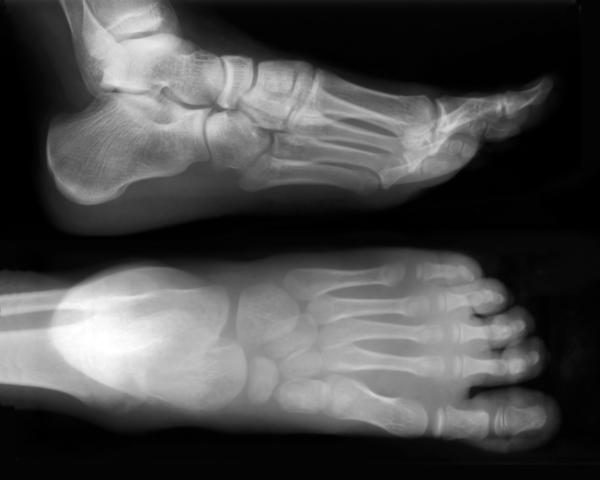
Will Vibram Five Fingers or Running Barefoot Injure You?
From the "Here we go again" department of the barefoot running world:About once every 2 months, some major news publication chimes in with one of these two stories: "Barefoot Running is GREAT for you" or "Barefoot running is BAD for you."The latest is of the latter variety and comes with headlines like this one from the New York Times: Barefoot Running Can Cause Injuries, Too, and Runner's World's "Study: Vibram FiveFingers Lead To Greater Risk of Foot Bone Injury.!What are these seemingly anti-barefoot articles talking about?A study done at Brigham Young University took 36 "experienced, recreational runners" and had 19 of them "gradually transition to Vibram FiveFinger running shoes over 10 weeks."After 10 weeks, 10 of the 19 had increases in "bone marrow edema."The researchers concluded that "Runners interested in transitioning to minimalist running shoes, such as Vibram FiveFingers should transition very slowly and gradually in order to avoid potential stress injury in the foot."Okay, let the picking apart begin.Before I criticize the study, let me criticize the hyperbolic reporting about the study.It's as if any time someone suggests that barefoot running might be bad for you (we'll come to whether the suggestion is valid in a moment), reporters jump on the story with a "Nah-nee nah-nee boo-boo, stick your head in doo-doo!" attitude.Look at the NYT headline. "Barefoot Running Can Cause Injuries, Too."Why is this over-the-top? Well, I hate to point out the obvious, but this study did not examine barefoot running. It looked at some runners in Vibram FiveFingers.VFFs are NOT barefoot. They may look like feet (gorilla feet, sure, but feet nonetheless), but the amount of padding and stiff rubber they have causes most runners to have a different gait pattern when they're in VFFs versus when they are barefoot. Simply, things that hurt when barefoot (e.g. over striding or landing too stiffly) are often unnoticed when in VFFs.The Runner's World headline, while accurate (it is reporting the conclusion of the researchers), it's a bit histrionic. That is, it almost implies agreement with the study. Had the reporter chosen to evaluate the study, rather than simply giving "just the facts, ma'am," or brought in an opinion from someone who evaluated the study, the headline might have been very different with a less anti-barefoot flavor.Now, don't get me wrong. Even though I'm a true believer in barefoot running (and walking and hiking and camping and kayaking and almost everything else), I'm also scientifically minded. If there were a good study that showed, "Barefoot running will erase photos from your hard drive!" I'd be the first to tell you to get a backup drive and buy some shoes.But this wasn't a good study.Let's break down the "barefoot" running study this way at first to see why:1) The researchers had the runners transition to VFFs by following a protocol from the Vibram website.2) A significant portion of those runners developed bone edema over 10 weeks.3) The researchers equated a certain amount of bone edema with injuryBased on this information, it's just as reasonable to conclude that the VFF transition program is the cause of injury, not the VFFs themselves.Next, if you poke around the podiatry and sports medicine world, you find another problem, namely, that there's a debate about the meaning of bone edema. Does bone edema = injury? The jury is out.So those two points alone should make you question what the study really shows.One thing we know it shows is that a majority of the VFF wearers got bone edema. And let's for now, assume that's the same as getting injured.In fact, let's dig a little deeper to find out that 2 of the VFF wearers got actual stress fractures -- definite injuries.Why did the runners get injured?Let's dig even deeper and look at those stress fractures.One was in the heel. How would you get that? Most likely by heel striking, a big no-no in the barefoot world and the common way to run in running shoes.The other was in the 2nd metatarsal? How would you get that? By landing hard on that bone behind your 2nd toe. And how does one do that? In my experience, by thinking "I'm supposed to land on the ball of my foot" and reaching out with your foot to do so. In other words, by over striding… the second big barefoot no-no.In other words, what this study may have really shown is that people who switch to VFFs who don't change their running form, or who change it incorrectly, get injured.But we have no way to know if that's what happened because the researchers didn't evaluate form. They didn't check to see if form changed over time.(BTW, the American Council on Exercise *did* look into that and found that most VFF runners do not change their form compared to how they ran in running shoes. Pete Larson took videos at the 2011 New York Barefoot Run and found the same thing -- most VFF runners were still heel striking as if they were in regular running shoes. Again, my explanation is that the VFFs don't give you enough feedback -- admittedly, discomfort -- to inspire the change.)The important barefoot running messageMost of us in the barefoot world like to say, "It's not the footwear, it's the form… it's just that some minimalist footwear helps you change your form better than others."What helps you change your form is feedback from the ground, the sensations you get when you run barefoot on a hard surface. In short, if it hurts, you'll try something different so that it doesn't, especially if you get a few tips about what to try (e.g. how to not overstride, how to not pull/push the ground, how to lift your feet off the ground rather than pushing).As far as getting sensations goes, barefoot is best. Xero Shoes are a close second (it's as if you're totally barefoot, but someone threw a thin layer of flexible rubber on the ground).Where are VFFs? Well, it depends on which ones you wear! Some have more padding (i.e. reduce ground feel) more than others. And in this study, we don't know which ones the runners were wearing.Let's back up a bit to another odd fact from the study. The shod runners averaged 30 miles/week, but the VFF runners averaged 15-18 miles/week. That's a BIG difference. And when you look at the transition plan, following the plan doesn't account for running half the mileage of your shoe wearing compatriots.Dr. Ridge guessed that the runners cut their mileage "because their feet hurt" but there's no indication that they ever reported pain, and since 9 out of 9 runners had no edema, they should have been still running their usual 30/week mileage, which would mean the 10 "injured" runners must have cut their mileage to about ZERO to get an average of 15-18.I suspect that the "random assignment" of people into the VFF group accidentally put the less skillful and accomplished runners into VFFs. I don't know for sure, because I don't see any stats on the pre-study mileage of each runner compared to the in-study mileage, let alone how the mileage changed for the "bone edema runners" vs. the "non-edema runners."Finally, let's look at the conclusion the researchers came to:Runners interested in transitioning to barefoot running shoes, such as Vibram FiveFingers should transition very slowly and gradually in order to avoid potential stress injury in the foot.Uh… how did they come to that conclusion?They didn't compare runners who transitioned in 4 weeks, 8 weeks, 10 weeks, or 10 years. For all we know, transitioning more slowly could be WORSE for you. Their suggestion might be as useless as, "If you want to avoid the frustration of learning Spanish, transition slowly and learn one new word per week."In other words, they have no basis to make that conclusion.The transition to barefoot running that I recommend starts with MUCH less distance than the VFF plan… but with more frequency (a little bit, more often). And it increases distance and frequency based on your unique experience, not some arbitrary schedule.Once again, I'm left with the hope for more, and more nuanced and well-designed, barefoot running studies. And, even more, for more and more nuanced reporting about barefoot running (or, in this case, minimalist running).The content of this post does not constitute and is not intended to be a substitute for professional medical advice, diagnosis or treatment. Always seek the advice of a physician or other qualified health provider with any questions or concerns you may have about your health or a medical condition.
Barefoot Running is Bad For You!
Is barefoot running good or bad for you? Despite the growing popularity of barefoot running, many people still believe the myth that barefoot running is bad for you. People who THINK barefoot running is bad for you will bring up certain assertions we will address below. If someone tries to convince you that barefoot running is bad for you, here’s how you can fight back against the common misconceptions! How We Got to This Point Over the years, the debate on whether barefoot shoes were bad for you has become more heated. It started when Chris McDoguall’s book, Born to Run, became popular In 2009... There was no big argument when Olympians Zola Budd ran barefoot In the 5,000m, or when Abebe Bikila won the marathon without shoes, or when Ron Hill competed in the Mexico City Olympics in “the lightest shoes I could find.” But once “regular folk” started kicking off their kicks, it’s become a rhetorical battlefield out there — the converts touting the great benefits of barefoot running, and the critics assuring everyone that taking off your running shoes is akin to playing Russian Roulette. Then a Harvard study came out, showing that when you run barefoot, you adjust your stride to put less stress on your body. But, right on the heels of it (pun intended), came editorials about how running barefoot is the worst thing you could do… though, most of those editorials came from people who own or work for shoe companies or shoe sellers. Yesterday, someone forwarded me an email saying “Well, I’ve seen people who tried running barefoot and they got injured! I’ve seen people during marathons, sitting on the side of the road in their barefoot shoes, crying in pain!” (Of course, right after, I got an email from a Xero Shoes huaraches running sandal owner, raving about how old running injuries they used to have are gone now that they’re out of shoes, but let’s ignore that for a moment.) Mark Plaatjes, world champion marathon runner, physical therapist, and co-owner of the Boulder Running Company, has said that he doesn’t think most people have the correct body type for running barefoot. Road Runner Sports sent out an email saying, “Well, if you run barefoot, you could step on something and really screw yourself up!” (that’s not the actual quote, which I’m too lazy to look up, but the gist of what they warned). The Vancouver Sun published an article, like dozens of others like it, claiming that running barefoot was dangerous, and the proof was the opinion of some doctors. What amazes me about this back and forth nonsense is how enraged the anti-barefoot gang is getting, and how they’ve thrown out not only their logic and critical thinking skills, but how they’ve ignored what every well-known barefoot running coach has advised. So let’s address some of the issues of barefoot running, as quickly as possible (which isn’t hard, since the arguments are simple). Why People Think Barefoot Running is Bad If you memorize these answers (or print out this article and have a copy in your back pocket), you can save yourself the frustration and/or humiliation of arguing with some Know-It-All who tries to convince you that running barefoot is bad. Assertion 1: Barefoot running will give you plantar fasciitis, Achilles tendonitis, ingrown hair, or male-pattern baldness (or any other injury). Response: Runners in SHOES get the same injuries! Those problems, when they occur, are not from “barefoot running”, they’re from OVERUSE or, more commonly, bad running form. If someone you knew went to the gym for the first time, and did the workout that Arnold Schwarzenegger used in his Mr. Olympia days, they’d end up with all manner of injuries, soreness and overall inability-to-move-for-days-ness. But nobody would scream from the rooftops, “Weight lifting is bad for you!” They would say to that individual, “Dude, you did too much too soon. Scale WAY back and build up to that slowly.” Clearly, the cure for overuse is UNDERuse. Do less. Build up slowly. Use some of the cues in these articles. The only problem is that the only way to know how much you can really handle is by doing too much… until you’ve done that enough and gotten the hint. Assertion 2: Some people aren’t built to go barefoot. Response: Not only is there no evidence for this, but what the barefoot running coaches all say is that by running barefoot you develop the skills, strength, and form that allow you to run barefoot. Now, there’s not any hard science behind that argument, YET(some researchers are working on it) But, which makes more sense: That someone is physically unable to run barefoot or in minimalist running shoes (the way humans have run for hundreds of thousands of years), but is absolutely fine in shoes… or that, due to lack of use, they may need to build up the strength before they can run barefoot. Besides, the only reason they would be okay in shoes and not barefoot, is because they’ve transferred the stress that the muscles and tendons and ligaments would have to deal with if they were barefooted (and get stronger by doing so) into the bones and joints.Again, the message is, Go slowly! (seeing a pattern here?) Assertion 3: You could step on something or, worse, IN something! Response: Yeah, so? But: How bad would it REALLY be?; How often is this REALLY a problem, or are you just imagining it happening without knowing the actual numbers?; Are these injuries worse than the various problems people have in shoes?; If you do step in poo… which is easier to hose off: your feet or a waffle-soled shoe? This argument cracks me up since I offer a solution on this website — get some barefoot running shoes or sandals and you’ll add a HUGE (but thin) layer of protection that still gives you a barefoot feel. I have to back up to the “stepping in poo” idea, because I just got a call from someone who said they were worried that’s what they would do if they were walking around barefoot. ”When’s the last time you stepped in poo?” I asked. “About 20 years ago,” the poo-fearer answered. ”Then what makes you think you’ll suddenly start doing it now?” I asked. “Ohh…,” said the former poo-fearer. Assertion 4: Doctors say they’re seeing more patients with injuries who are running barefoot. Response: Doctors said the same thing 45 years ago when running shoes became popular. Doctors are not seeing the people who are not having problems running barefoot… because those people don’t go to doctors. In other words, if you don’t know the total number of people who are running barefoot, seeing an uptick in patients is a meaningless statistic. I’ve never met a doctor who asked their injured patient, “So, are you running barefoot or in something like a barefoot shoe?” (hint, most people who say they’re running barefoot have never put their bare skin on the ground, or worn something as minimalist as Xero Shoes.). I’ve never met a doctor who has said to their patient, “Let’s take a look at some slow-motion video of you running and see if the real problem is your form, and not your footwear or lack thereof.” The injury rate for people wearing "normal" shoes is estimated at 50 to 80% per year. So the real question is this: are barefoot runners getting injured at a higher or lower rate? What cracks me up about the anti-barefoot gang is the simple denial of the numbers. That is, there are millions of people taking off their shoes without a problem. You don’t end up with a movement like the barefoot running movement without a high percentage of happy converts. This alone should, but doesn’t, temper their argument on why they think barefoot running is bad for you. And, again, the answer couldn’t be simpler: Oh, if you’re going to try barefoot running, you may need to go WAY slower than you thought. You’ll have to learn to listen to your body in a way you haven’t before, and you’ll need time to build up strength to let you handle the same distances you may now be running. You may also want to get something to give your sole a bit of protection. So, Barefoot Shoes Aren’t Bad for You?! Here are a few key differences between conventional running shoes and barefoot shoes. No heel lift (zero-drop) A wider, foot-shaped toe box to let your toes spread No unnecessary cushioning An extremely flexible sole that gives you protection but is thin enough to let the nerves in your feet safely FEEL the ground and be more connected to the earth, rather than walk on it. Discover what you've been missing – natural comfort, performance and health. Feel the fun and benefits barefoot inspired shoes and live life feet first The content of this post does not constitute and is not intended to be a substitute for professional medical advice, diagnosis or treatment. Always seek the advice of a physician or other qualified health provider with any questions or concerns you may have about your health or a medical condition.
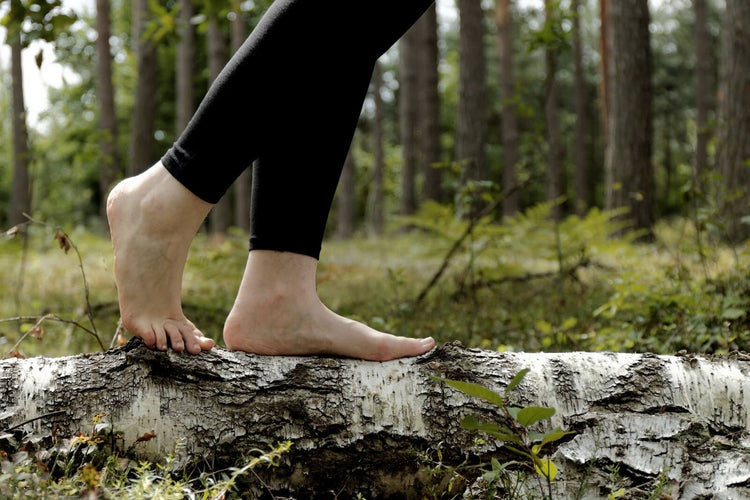
How To Walk Barefoot: Techniques & Health Benefits
Most of you will read the title and think, "Uh, I don't need instruction about how to walk because I have been doing it my whole life!" Others (hopefully) will think, "Finally, the answer to my burning question - have I been walking wrong this whole time?" Whichever group you are in, keep reading to learn about the surprising benefits of barefoot walking (or the benefits of zero drop/minimalist shoes), as well as instructions to get you started. What Is The Right Way To Walk? For those of you who are skeptical that there may be a better way to walk, let me ask you this: Do tribal women in Africa with water jugs balanced on their heads walk in the same way that Olympic race walkers do? Do either of those people walk in the same way that you do? The answer to both questions is obviously no. That's because walking isn't just walking. There are optimal ways to walk, just like there are optimal ways to throw a baseball, or do a ballet split leap. That doesn’t mean there’s only one way you walk under all circumstances. Your gait will change if you’re walking uphill or downhill, accelerating or decelerating, walking fast or walking slow, or walking on different surfaces. But there are fundamental principles that you’ll discover in this article which can make your walking more efficient, enjoyable, and simply better for your body. How Going Barefoot Can Help You While it’s possible to learn optimal walking form in shoes, it’s faster and easier to be in your bare feet to discover the best way to walk. That’s because: Most “normal” shoes get in the way of proper walking form. They squeeze your toes together, alter your posture with elevated heels, and are stiff enough to restrict your bones and joints from moving naturally. (more about footwear in a moment). When you’re barefoot, you get feedback from the ground which can help you find a natural, comfortable way to walk. In short: walking with proper form feels good, and improper form feels uncomfortable. Finally, walking barefoot can be fun. Especially if you have the courage to explore going barefoot in places where you’ve never felt the surface you’re walking on. One other advantage: By walking barefoot, you become your own best teacher about proper walking form. Listening to your body will help you discover your own secrets for walking efficiently, enjoyably, and easily. How Should My Foot Land When I Am Walking? Some Youtubers suggest we’re built to have our forefoot touch the ground first. And there are some who say that you’re supposed to land on your heel when you walk (barefoot or not). They say, “That’s why we have a fat pad under our heel.” Prior to the barefoot running boom and the publication of Born To Run in 2009, people rarely talked about different ways your foot can or should contact the ground. Now it’s practically dinner party conversation, where the barefoot gang looks down their noses in disgust at shoe-wearing heel-strikers, and shoe-wearers call the barefooters crazy hippies, and fights have broken out about whether landing on your forefoot is better or worse than landing on your midfoot or flat-footed. So, which is it? Well, the real answer is: Asking which part of my foot should touch the ground first is the wrong question ;-) What I mean is: Your footstrike changes based on whether you’re walking uphill, downhill, fast, slow, accelerating, decelerating, and what surface you’re on, and; Your footstrike will mostly take care of itself when you learn the most important aspect of barefoot walking, namely… Landing with your foot underneath your body (or close to that) rather than having it land too far out in front of your body, which is called “overstriding.” If you’ve explored barefoot running, you’ll recognize these ideas about walking are the same as for running. Where your foot lands in relation to your body, to your center of mass, is the most important thing. And the way you learn to have your foot land in the right place is all about using your glutes and hamstrings properly when you walk… and that’s what the instructions, below, will teach you to do. How Do I Train Myself To Walk Barefoot? If you want to learn the natural way to walk, follow these steps for learning how to walk barefoot properly (and more enjoyably!): Get Barefoot Start by taking off those shoes, or get as close as you can to having bare feet. Incredibly, even socks can get in the way of the feedback you need to learn proper walking form. You want to be able to fully articulate your foot and let your nerves feel the ground. If you have to wear shoes, avoid shoes that get in the way of natural movement, namely, cushioned shoes, shoes with elevated heels, shoes that squeeze your toes together, and shoes that are not super flexible (e.g. you can’t roll them into a ball). Instead, choose barefoot-inspired, minimalist shoes that are low to the ground, flexible and with a non-elevated “zero-drop” heel and a wider, foot-shaped toe box, like Xero Shoes. Walk with your glutes, not your hip flexors Your glutes and hamstrings are among the largest muscle groups in your body. They’re referred to as “prime movers.” But most people don’t use their prime movers. Instead, when most people walk, they swing their free leg out in front of them by using their hip flexor muscles, and push off with the toes of the standing leg so they can then pivot over the front leg. Try this technique instead: Lift your left foot about an inch off the ground. Through the next 4 steps, you want to leave that leg alone. Don’t swing it forward. Let it hang there, as much as possible, doing nothing. Now, imagine the motion of a roller skater or ice skater. When you skate, you push yourself forward by driving your standing leg backwards. When you skate, you drive your heel backwards, keeping it on the ground as long as possible. Doing this engages your glutes and hamstrings. That’s why skaters have great butts ;-) Next, do that skating move, driving your right heel backward. Remember, don’t swing your left leg forward. When you push your right heel back enough, and don’t use your left leg, at some point – and you won’t have to think about it – your left foot will plant itself on the ground so that you don’t fall on your face. Look at where your left foot is in relation to your body. If you’ve done this correctly, you’ll see that it’s basically underneath you, supporting you, as your right leg is dangling in the air, pretty much where your left leg was in step 1... Now that your weight has shifted to your left leg and your right leg can hang there, with your foot about an inch off the ground, simply repeat the steps above but with your left leg’s heel pushing back in a “skating” motion, and use your right leg just to catch you and keep you from falling. At first when you do this, you’ll be walking a bit like a robotic Frankenstein… sort of lunge-catch-stop-lunge-catch-stop. Keep doing this until you get the feeling of using your glutes as you drive your heel back, relaxing the “swinging leg” and only using it to catch you at the last moment, landing with your foot under your body. Then, smooth it out like this: Don’t push your heel back quite so far (but still use your glutes) When your front foot lands, immediately start driving that heel back See how much you can relax As you smooth it out, you may notice that as you walk it can feel like you’re slightly falling forward. This is fine. In fact, it’s probably not true. It’s probably that you were previously walking with your hips slightly behind your feet and, possibly, with your shoulders behind your hips (if someone were looking at you from the side, that is). When you walk properly, it can feel odd simply because it’s not what you’re used to. That “slightly falling” feeling means you’re using less energy. And it usually also means that your feet are under your hips and your hips are under your shoulders. As you experiment this, you’ll probably find other parts of your body relaxing and doing less. Listen To Your Body & Stick With It Again, don’t worry about which part of your foot touches the ground first. Gently rolling over your heel is fine. Landing forefoot is fine. Landing flat-footed is fine. You’ll do all of those as you explore different surfaces, different inclinations, and different speeds. For example, on hardwood floors I tend to land flat-footed or on my forefoot. On carpeting I roll over my heel. Walking uphill, I always land on the ball of my foot. Walking downhill I always roll over my heel (because the ball of my foot would land in front of my body which would be like putting on the brakes). Because you are able to feel the ground now, your feet will provide feedback about what is and isn't working. This walking technique can help support your lower back, knees, hips, and your ankles. Your foot strike will take care of itself, and it will feel like you are walking on top of your feet rather than behind them. Remember, this motion may feel robotic at first. As you practice and relax, it will become a smooth, comfortable, and efficient experience. Are Minimalist Shoes As Good As Walking Barefoot? Going completely barefoot isn't for everyone and isn't right for every occasion. The good news is that you can walk in minimalist (or barefoot) shoes instead. That's why we created Xero Shoes - so you can get all the benefits of being barefoot while still protecting your feet. Xero Shoes are designed with a thin, flexible sole and roomy toe box so your feet can move naturally. This allows you to strengthen your foot muscles and safely get feedback from your environment similar to what you get in bare feet. NOTE: Not all minimalist shoes are, well, minimalist There are many footwear brands that advertise their shoes as “barefoot” or “minimalist.” And there are brands that advertise that they’re “zero-drop,” meaning that the heel isn’t elevated higher than the ball of the foot. People often use minimalist and zero drop shoes interchangeably, which isn’t accurate, since you can have a zero-drop shoe with a stiff, or highly cushioned sole. According do Dr. Irene Davis, the characteristics of a truly “barefoot shoe” are: A wider, foot-shaped toe box No arch support (more about that in a moment) Little or no cushioning (more about this, too, in a moment) A flexible sole to allow for proper foot motion A thin sole to provide proper feedback about what you’re stepping on or in Light weight “Zero-drop” on a non-elevated heel According to Dr. Davis, shoes that don’t have ALL of those characteristics are “partial-minimalist shoes.” And her research shows that these types of shoes are the worst shoes to wear. That’s because, typically these shoes have cushioning that inhibits the feedback you need to naturally adopt a more ideal gait, and any heel lift will do something similar. Xero Shoes, according to Dr. Davis, checks all the “barefoot boxes.” Plus, we make our soles more durable and back them with a 5,000 mile sole warranty. In addition to our collection of minimalist shoes, we also make minimalist sandals and boots that you can wear anywhere from the office to the trail. Can I Walk Barefoot On Hard Surfaces? In a word: Yes Humans evolved in places with packed mud that’s as hard as concrete (and with rocks and twigs and pokey things that you would never want to step on). Your muscles, ligaments, and tendons are natural springs and shock absorbers. Better than any man-made cushioning material. And when you land with your foot underneath your body, you can engage your arch (regardless of whether you have flat feet or high arches), to give you a strong foundation. By following our technique, your feet will naturally learn how to handle hard surfaces just fine. However, there is, of course, a time and place for minimalist shoes. Wearing minimalist shoes can help protect your feet from: High temperatures Sharp objects Potential fungal infections Places that require footwear Have FUN! One of the best things about walking barefoot is how enjoyable it can be. Over time you may discover that surfaces you originally found unpleasant to walk on become your favorite natural foot massagers. You’ll probably find ways to make your movement more efficient and feel parts of your body relax that you never knew were tense. Learning a new movement pattern takes a bit of time to become habitual, and it’s a different amount of time for each person. So, while you’re adjusting, use fun as your guide. If it feels like work, stop. Rest. Then start again later. Remember that your brain integrates new things when you’re resting, not by working harder. So, use fun as your guide. And, if you want to try Xero Shoes, start shopping here, or take our Shoe Finder Quiz and get recommendations for your new favorite footwear. The information in this post does not take the place of medical advice. Only your doctor can provide advice, diagnosis, and treatment. Always consult a qualified health provider if you have questions about your health.
Dan Lieberman on Running Form
Harvard's Daniel Lieberman is one of the stars in Chris McDougall's book, Born To Run. In the book, Chris describes Dr. Lieberman's anthropological theory that humans ability to run long distances (while maintaining their body temperature) allowed us to chase down animals that, for short distances, are much faster than we are. He also details Lieberman's research into running mechanics and running form, including the famous study that demonstrated how barefoot running puts less force through your joints and can be better/safer for you.Well, thanks to Pete Larson at www.runblogger.com (who turned me onto the following video), and thanks to Tuck at http://yelling-stop.blogspot.com/ (from whom Pete found it), I'm happy to share this video of Dan sharing his top 5 tips for better running.All I would add (and I'm about to release something that describes this) is that "Don't overdo it" isn't a useful message, because the only way you know if you've over-done it, is when you've done too much and it's over! ;-)In other words, better to come up with a plan for what you ARE going to do, rather than make an admonition about what you shouldn't do, since us humans are as bad at following "don't do this" rules as we may be as good at chasing down an antelope.
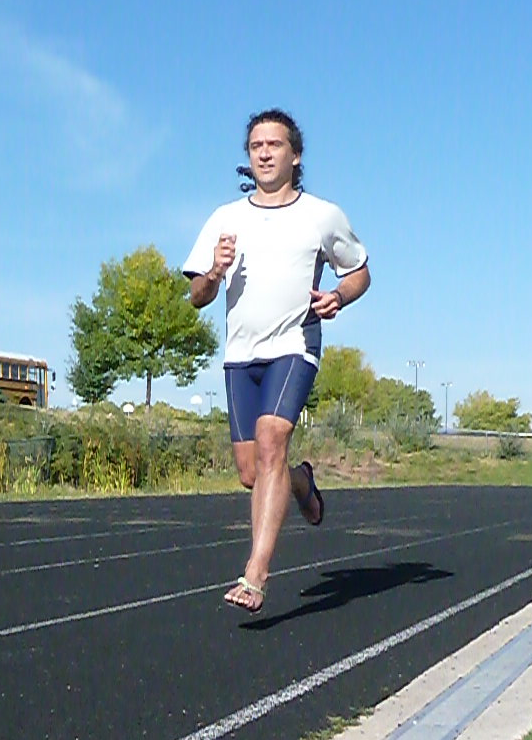
How To Run Barefoot
How to Run Barefoot: Techniques to Get Started “How do I start barefoot running?” “What’s the best book/course/coach for learning to run barefoot?” “Can you show me what the best barefoot running form looks like?” I get these questions a lot. And it’s a bit tricky to answer them for a few reasons: Frankly, if all you did was take off your shoes, go for a run, stop when it hurts, and experiment to find ways of running that feel light, easy and fun (which is the way running with natural form should feel), you would learn more than I, or anyone else, could tell you. Those of us who’ve observed barefoot runners and coached barefoot running are starting to notice the obvious: different runners have slightly different form. That is, when you look at the BEST runners, they have many things in common, but they’re not all doing the exact same thing. So, I don’t want to say something that isn’t going to be relevant for YOU. To be totally candid, I’m in an awkward political situation — as a guy who sells “barefoot-style” footwear, and who would like to have ALL the coaches referring their clients to me, I can’t single out one coach/book/technique over another (or one “under” another, either). I can tell you that if you listen to ALL of them, and then follow a bit of advice I’ll give, below, you’ll appreciate each coach for his/her unique contribution to your barefoot running form. Many runners aren’t aware of what their bodies are actually doing, so certain recommendations won’t be effective anyway. If I say to you, “don’t land on your heels,” and show you a video of how you’re “supposed” to land on your foot, you may be 100% convinced that you’re doing what I suggested, and then a video might show that you are totally heel-striking. In other words, what I say will be less important than what you learn on your own. However, what I CAN do is offer some thoughts about getting started with barefoot running. Tips on How to Run Barefoot Here are my best tips on how to get started running barefoot, refining your running technique, and enjoying the benefits and fun of barefoot running How to Getting Started Realize that the best coach you have is YOU and your sensations and whatever you can learn from watching video of yourself (especially slow motion video). In fact, you MUST become your own best coach, because no external coach will be there for every situation you’ll encounter as a runner. If you can’t listen to yourself, make adjustments in what you’re doing, and know when to STOP… no other coach will be helpful anyway. Start SLOWLY and build up. There’s no rush in making the transition to barefoot running. And there’s no way to predict how long it will take YOU. Run barefoot on a hard, smooth surface. These surfaces are best for learning because they give you the most feedback. Remember that barefoot running is a never-ending process. You can always improve. Refining Your Barefoot Running Form To be slightly more specific and technical, and tell you some of what you would discover on your own with enough time and attention: Aim for having your feet land “under your body” - more so than you’re probably used to. Landing with your foot out in front of you too much is “overstriding” and it’s one of the habits that most of us need to work to overcome. You may need to even exaggerate this to get the feel of it — put your feet “behind you” when you land. You won’t actually be able to do this, but if you try it will highlight what overstriding feels like… and the correct place to put your feet is probably somewhere in between. You want to land forefoot or midfoot. Do NOT reach out with your foot to do this; that’s the opposite of what you want to do. By the way, If you land with your foot underneath your body it's almost impossible not to land on your forefoot or midfoot. You don’t need to stay on the balls of your feet and put extra strain on your calves and Achilles tendons. Once you land on the ball/midfoot, you can let your heel drop if it feels better to do that, and it will feel better/worse depending on whether you’re going uphill or downhill or on a flat surface, and depending on what speed you’re running. Don’t PULL your foot toward you, or PUSH it behind you… that’ll cause blisters as well as put extra strain on your hamstrings (pulling) and calves (pushing). Think, instead, about PLACING your foot on the ground and LIFTING it off. And lift by using your hip flexor. That is, think about lifting your foot off the ground by lifting up your knee, not by pushing off the ground. Un-Plop your feet. This is hard to describe, but many of us slam our feet into the ground, or wait for the ground to hit our feet. We plop them onto the ground instead of meeting the ground lightly. There are a lot of “cues” coaches use to teach this: Pretend you’re running on hot coals, or on thin ice, or trying to sneak up on a deer, or that your feet are wheels and you want them to touch where the wheel meets the ground, or that the ground is moving below you like a treadmill and you want to move your feet at the same speed as the treadmill. You will need to find your own way to feel this. Keep your core tight… when you run, your body is a spring. If you collapse in your midsection, you’re weakening the spring and making it less efficient and, therefore, making it harder to run. Pick up your cadence. Most people think 180 steps-per-minute is some magic number. It’s not. Some successful runners do more, some do less. The point of moving your feet faster than you’re probably used to is that it gives you less time to keep your feet on the ground… and that’ll help you learn to place/lift, “un-plop” and not overstride. LISTEN to the sound your feet are making… if you’re running loudly, if you make a lot of noise when your feet hit the ground, you’re doing one of the above incorrectly. This is true if you’re barefoot, in our barefoot shoes, or any other footwear. You can run quietly (not silently), and quiet running is usually a sign of good form. WONDER! When I run, I keep a question in my mind, “How can I make this lighter, easier, and more fun… and, sometimes, faster?” Then, I experiment and see what I can find. Finally, and most importantly: REST. Bodies get stronger when you let them rest. There are no bonus points for not taking a day off. HAVE FUN! If it’s not fun, do something different. Try a different surface, a different speed, a different reason for running (compete if you haven’t before, do an obstacle course if you’re usually all about putting in mile after mile). I’m sure other barefoot runners have additional pointers. Can’t wait to hear them. Oh, and did I mention, barefoot running can be, should be, and IS (once you get it) FUN… don’t forget that! Want to learn more about learning how to barefoot running? Watch this video below The content of this post does not constitute and is not intended to be a substitute for professional medical advice, diagnosis or treatment. Always seek the advice of a physician or other qualified health provider with any questions or concerns you may have about your health or a medical condition.


